Class Mammalia
Order Rodentia
Family Cricetidae
Subfamily Arvicolinae
Ondatra sp.—Muskrats // Ondatra idahoensis—Idaho Muskrat // Ondatra zibethicus—Common Muskrat
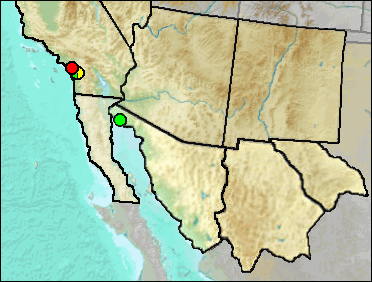
Sites.
Late Blancan/Early Irvingtonian: Elsinore: Mimomys (Pajak et al. 1996).
Irvingtonian: El Golfo (Croxen et al. 2007: ?).
Wisconsin: Costeau (Jefferson 1991b).
Literature.
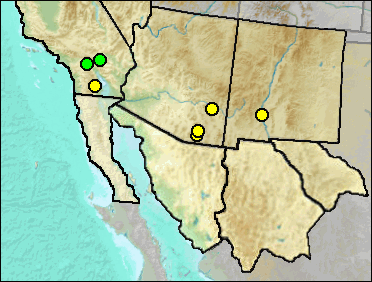
Fossils of Ondatra idahoensis are widely distributed in the U.S., but the species is represented in New Mexico only by a palate with complete dentition from the Kelly Canyon site. It is well represented in the Arizona late Blancan and in southern California.
Sites.
Late Blancan: 111 Ranch (Morgan and White 2005); Anza-Borrego (Murray 2008); California Wash (Johnson et al. 1975); Curtis Ranch (Lindsay 1984); Kelly Canyon (Morgan et al. 2011).
Early Irvingtonian: El Casco, San Timoteo Badlands (Albright 2000); Gypsum Ridge (Wagner and Prothero 2001).
Literature. Albright 2000; Johnson et al. 1975; Lindsay 1984; Morgan and White 2005; Morgan et al. 2011; Murray 2008); Pajak et al. 1996; Wagner and Prothero 2001.
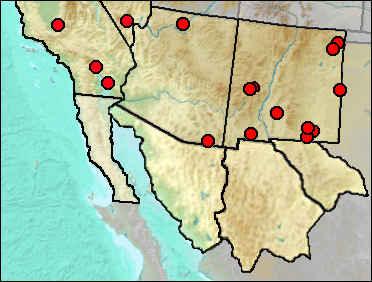
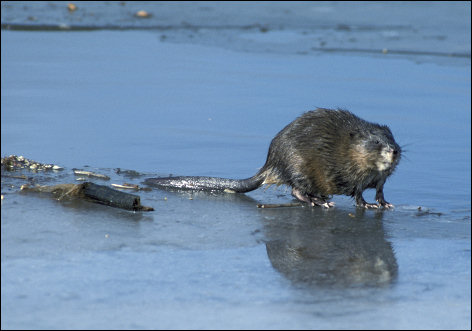 The semi-aquatic Common
Muskrat relies on aquatic vegetation, and their lodges or other denning sites are protected by
water. Presence in a fossil locality indicates permanent water within the range of "site
capture." Muskrats are relatively large, with only medium or large mammalian predators or
large raptorial birds apt to move prey far from the site of the kill. Most skeletal items are
easily identified. Thus, unlike many smaller mammals, presence in the fossil sample is unlikely to
go unnoticed.
The semi-aquatic Common
Muskrat relies on aquatic vegetation, and their lodges or other denning sites are protected by
water. Presence in a fossil locality indicates permanent water within the range of "site
capture." Muskrats are relatively large, with only medium or large mammalian predators or
large raptorial birds apt to move prey far from the site of the kill. Most skeletal items are
easily identified. Thus, unlike many smaller mammals, presence in the fossil sample is unlikely to
go unnoticed.
Fig. 1. Common Muskrat. US Fish & Wildlife Service photograph by Dave Menke.
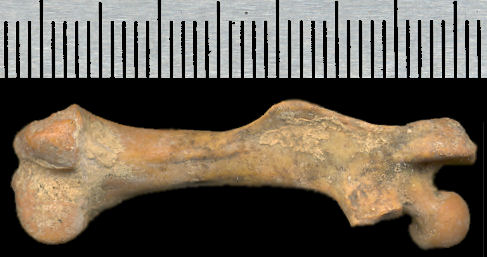
Fig. 2. Ondatra zibethicus femur (UTEP 6-5106) from Harris' Pocket, Dry Cave. Millimeter scale.
Although most records are from sites close to current bodies of water or known Pleistocene lakes, the Baldy Peak presence presumably documents a period of time during which the Mimbres River was an active stream far south of where it currently is permanent.
Sites.
Pleistocene: Perico Creek (Morgan and Lucas 2005).
Rancholabrean: Alkali Flat (Morgan and Lucas 2005); Eagle Crest (Jefferson 2014); Flowing Wells No. 3 (Jefferson 1991b: ?); Flowing Wells No. 10 (Jefferson 1991b); Lake San Agustín (Morgan and Lucas 2005); Tramperos Creek (Morgan and Lucas 2005); Tule Springs 4 (Jefferson et al. 2015).
Wisconsin: White Lake (Harris 1993c).
Mid Wisconsin: Screaming Neotoma Cave (Bell and Glennon 2003).
Mid/Late Wisconsin: Dark Canyon Cave (Tebedge 1988); Glendale (Jefferson et al. 2015).
Late Wisconsin: Animal Fair 18-20 ka (Harris 1989); Blackwater Draw Fauna (Morgan and Lucas 2005); Double Adobe (Mead et al. 2005); Harris' Pocket (Harris 1970a); (Jefferson 2014); Muskox Cave (Logan 1981); Mountain View Country Club (Jefferson 2014); VLA (Morgan and Lucas 2005).
Late Wisconsin/Holocene: Baldy Peak Cave (Harris 1993c); Tule Springs (Mawby 1967).
Literature. Bell and Glennon 2003; Harris 1970a, 1989, 1993c; Jefferson 1991b, 2014; Jefferson et al. 2015; Logan 1981; Mawby 1967; Mead et al. 2005; Morgan and Lucas 2005; Tebedge 1988.
Last Update: 11 May 2015